Ever since Ford announced that its 2021 F-150 PowerBoost hybrid would offer a 7.2 kW onboard generator, we wondered if it would be able to charge an electric car. It’d be a boon to recovery companies if they could purchase an XLT with the generator to help stranded EVs alongside the road. Now we have the answer.
Preparing to charge
To use the Pro Power Onboard generator with a Tesla, you’ll need a few cables and adapters.
First, you’ll need your mobile charging adapter that came with your car. It comes with a standard wall socket plug so you can trickle charge.
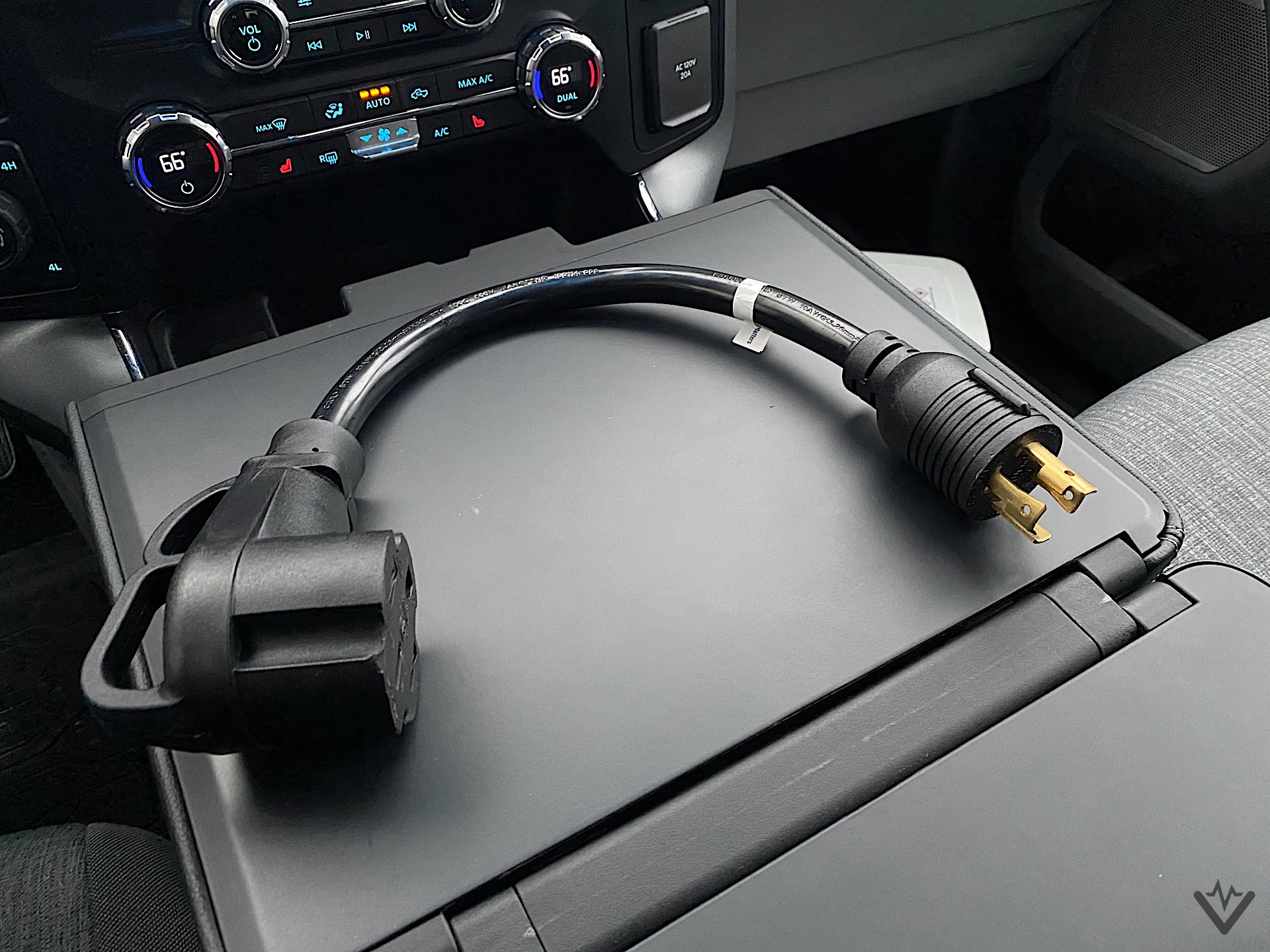
You’ll need the Tesla NEMA 14-50 adapter in order to be able to level 2 charge your Tesla from the generator. Then, you’ll need the adapter to convert the generator plug to the NEMA 14-50. We used this one for our testing.
If you don’t wish to purchase either of those, you can still charge at the slower rate.
Level 1 charging
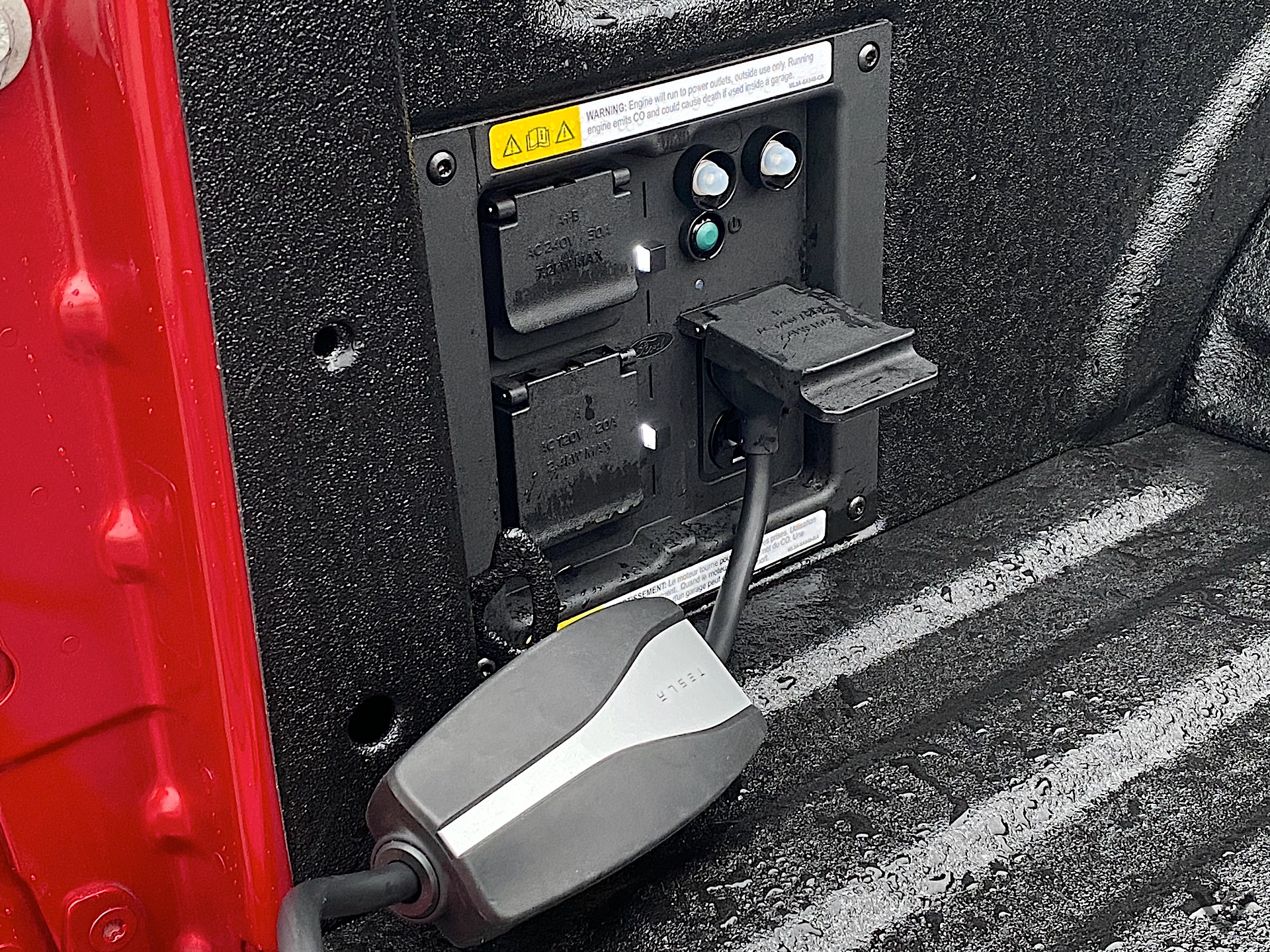
To make sure everything worked, we enabled the Generator Mode on the Pro Power Onboard. A dialogue box informed us the truck will run in order to provide maximum power.
We plugged in our Tesla to the standard wall plug and saw the Tesla mobile charger light up green. That’s a good sign indicating there was no fault with the system.
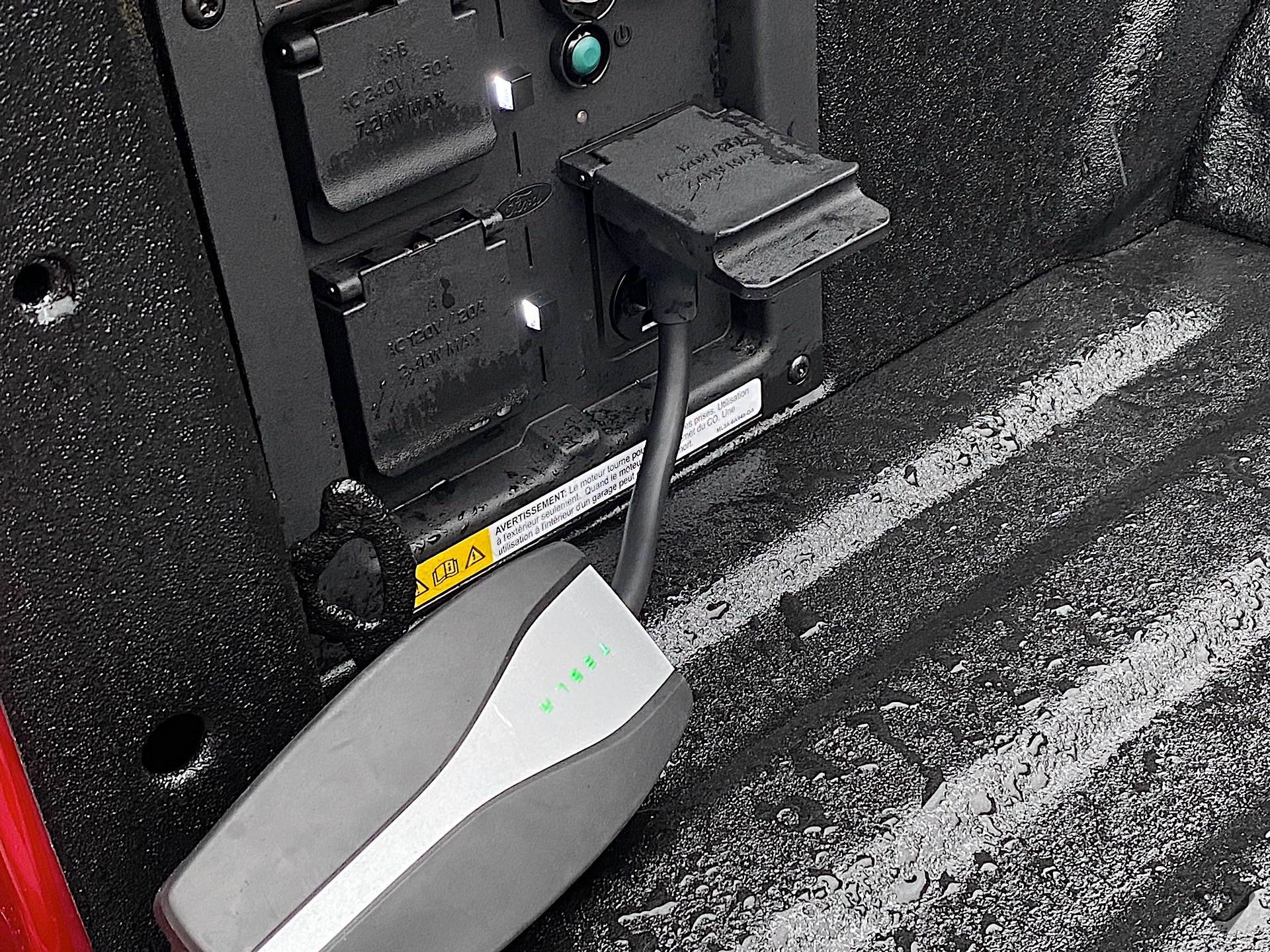
We then plugged the Tesla charger into our Model 3 Standard Range Plus and the plug locked into place. The mobile adapter started pulsating, indicating that it was working properly.
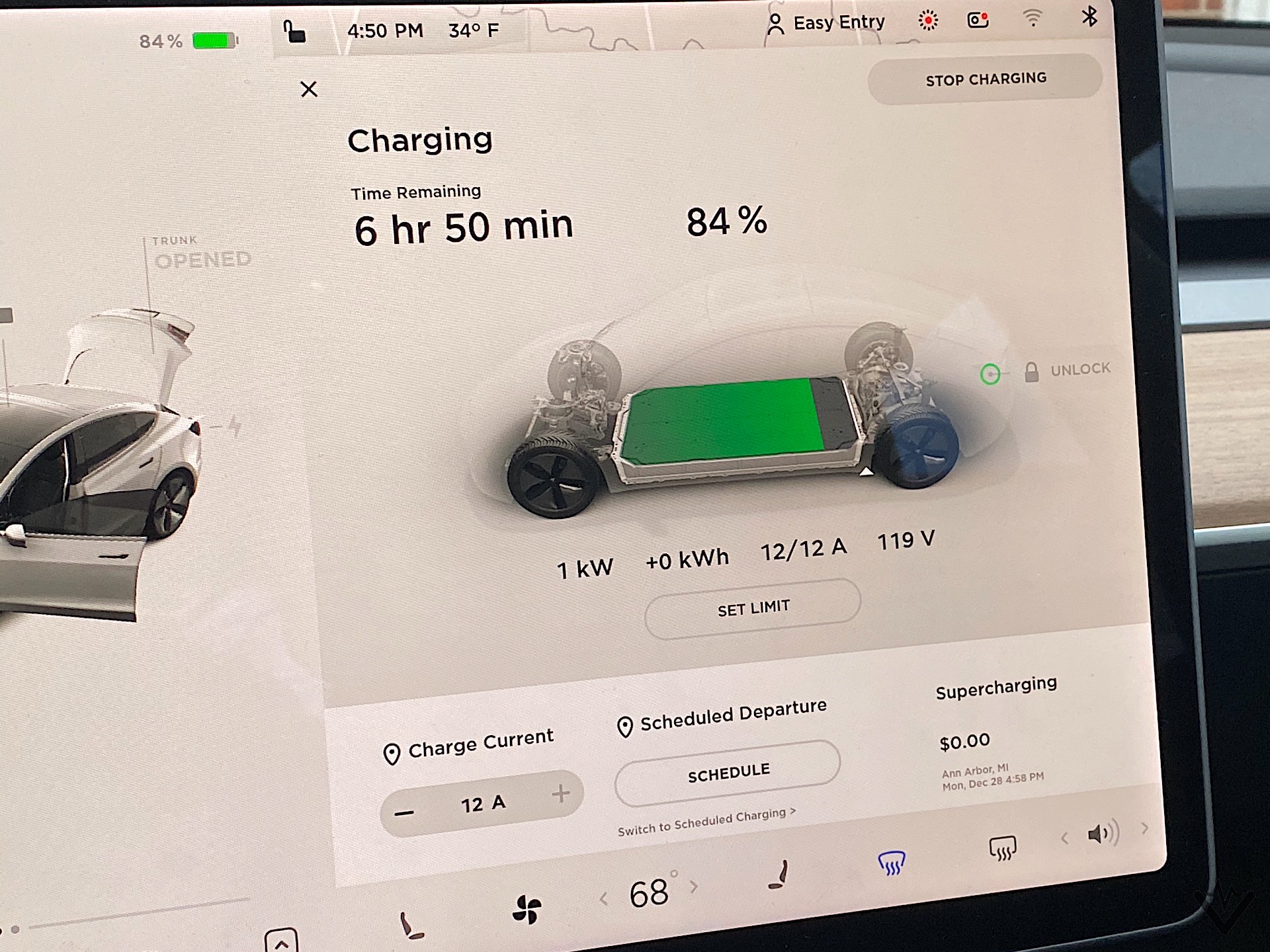
Checking the onboard display in the Model 3, it indicated we were charging at approximately 118 volts at 12 amps.
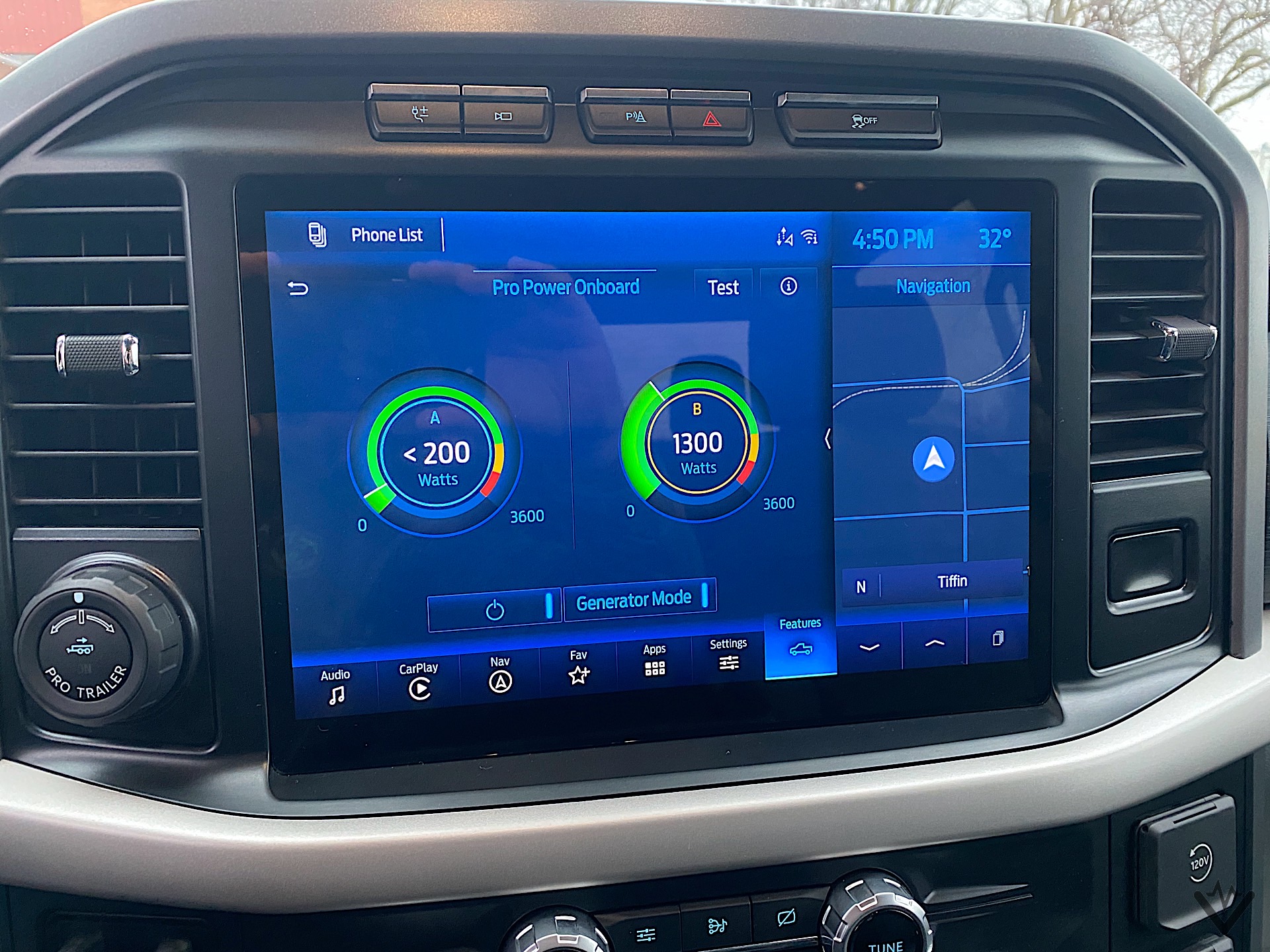
The Pro Power Onboard screen also indicated that the generator was in use, but well in the safe territory.
Level 2 charging at 24 amps
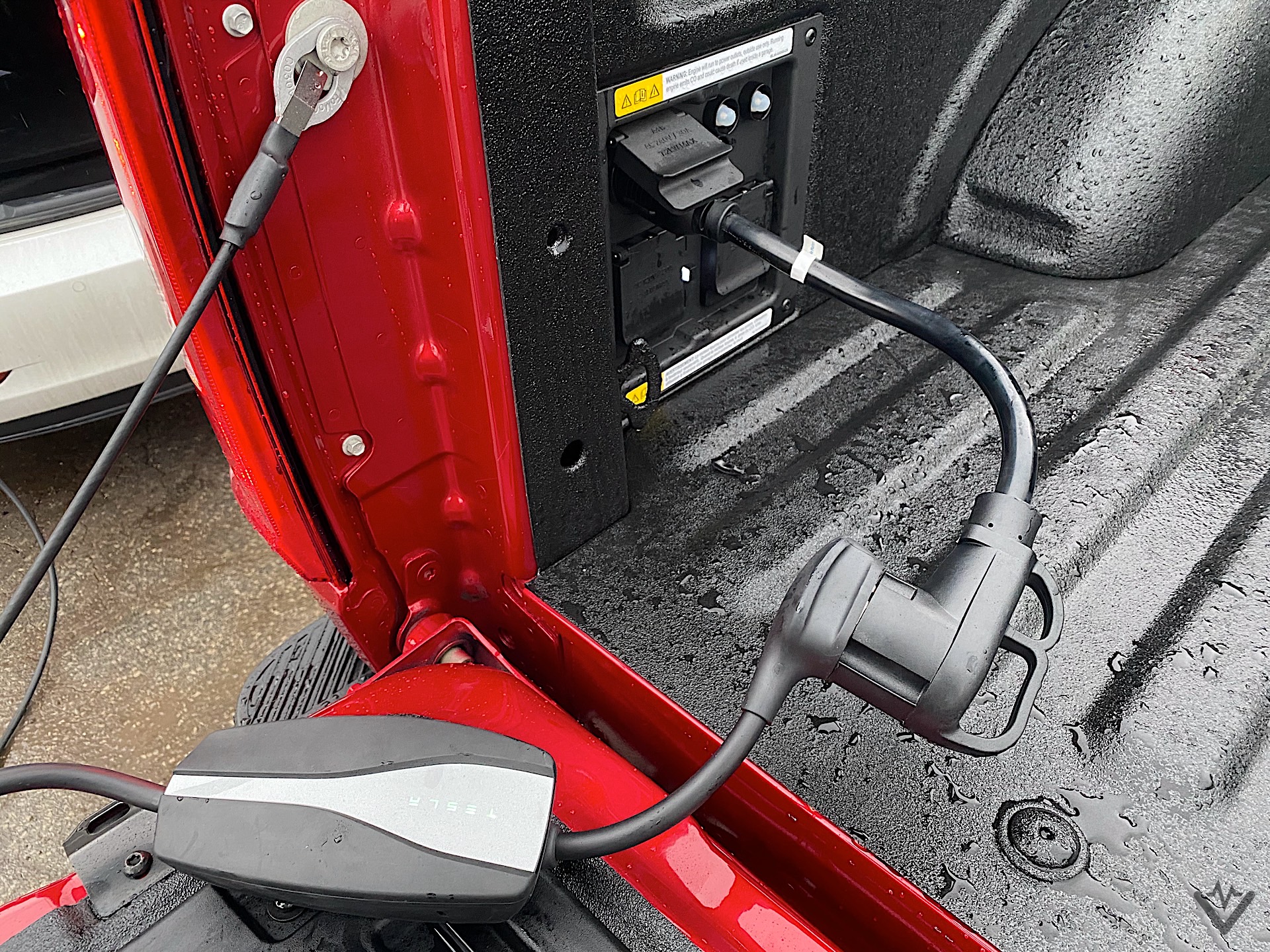
When installing a wall charger, electricians recommend setting the breaker for 20% greater than the power of the charger. For our 48 amp Tesla charger, we have a breaker at 60 amp. For the purpose of this level 2 charging, we needed to be set at 24 amp. For reference, Ford claims that the maximum output is 30 amps from the generator.
On the Tesla screen we can indicate a maximum charge amperage before plugging it. We set it to 24 amps, attached the generator adapter to the NEMA 14-50 plug, and plugged it into the mobile charger.
Then we plugged it into the F-150 generator and the Tesla charging port.
The charging cord started pulsing green, meaning everything was good to go. The truck’s idle increased a little bit, but still nearly whisper silent to our ears.
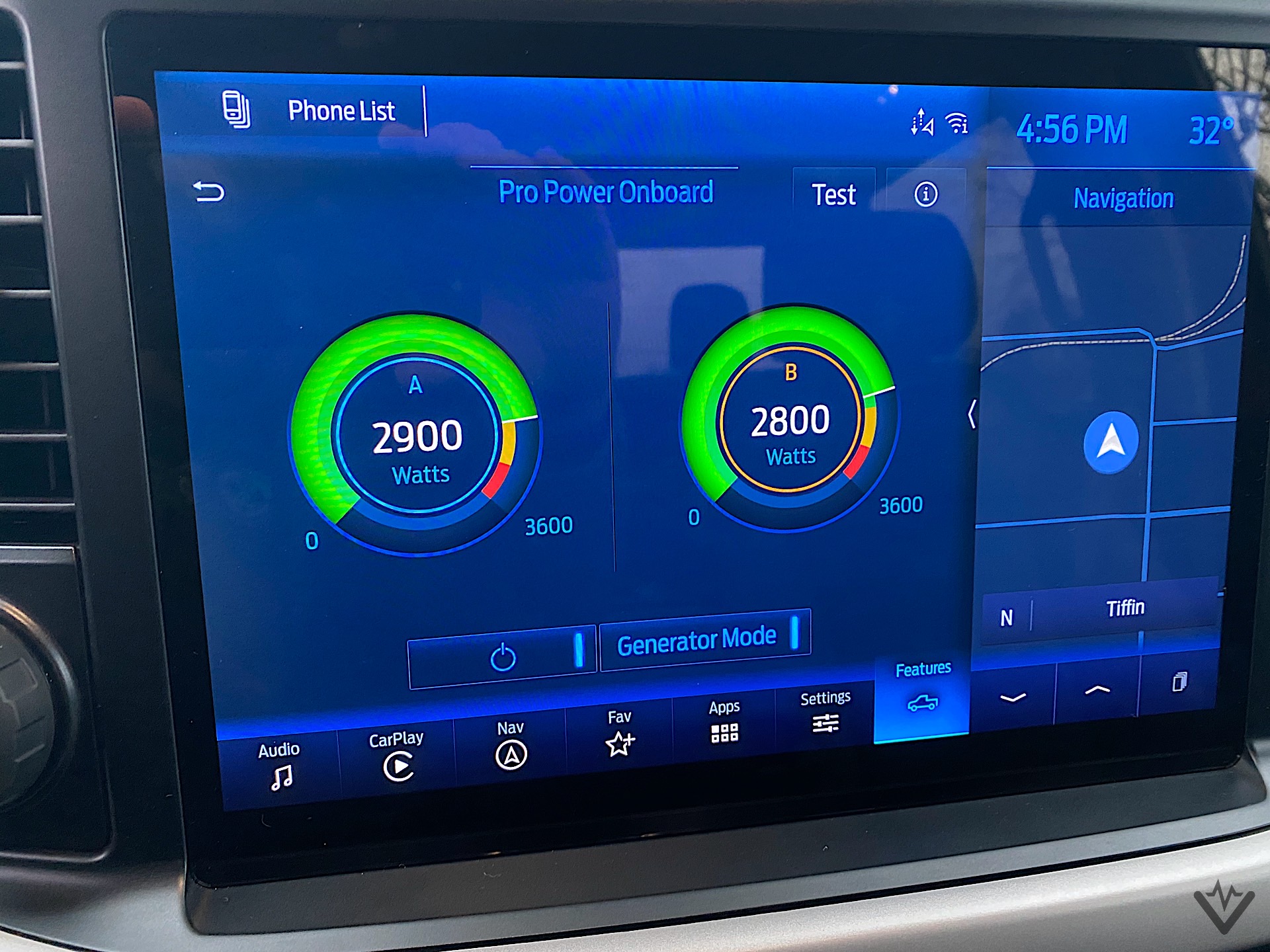
The truck’s screen said everything as going well.
The Tesla screen indicated we were, in fact, charging at 24 amps and approximately 238 volts. The Tesla says that’s approximately 6 kW.
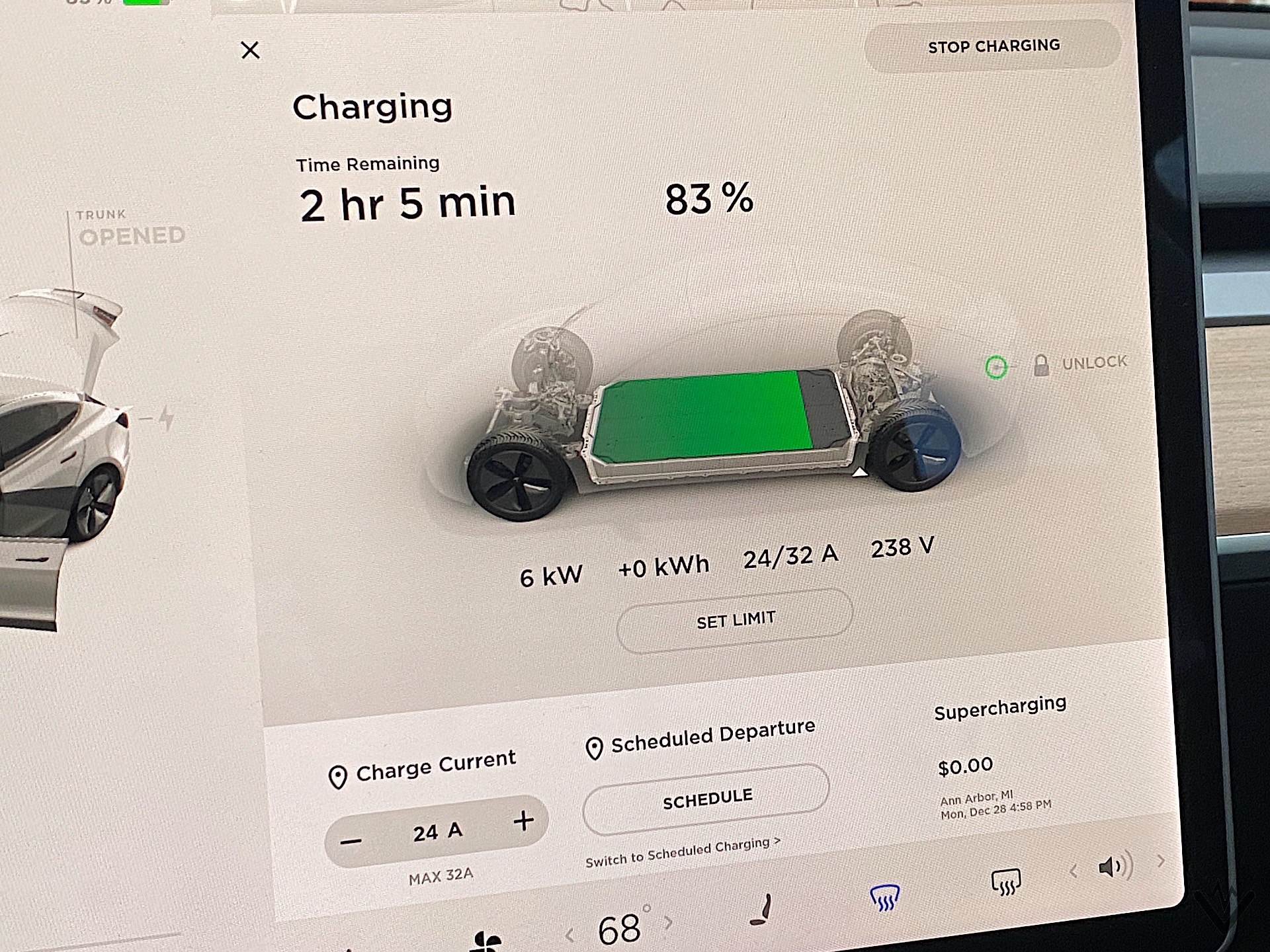
That’s pretty quick for level 2 charging, and faster than what some EVs will charge at. But since the mobile charging adapter can support up to 32 amps, and Ford says the Pro Power Onboard can do 30 amps, what happens if we bump it up?
Level 2 charging at 30 amps
Following the same procedure as before, we set the Tesla to maximum charge at 30 amps from the power adapter. We then plugged it all in and everything started to work.
The idle again increased on the F-150, but still nothing worth noting. It was cold out, so you noticed more exhaust coming out, but really that’s the only noticeable difference.
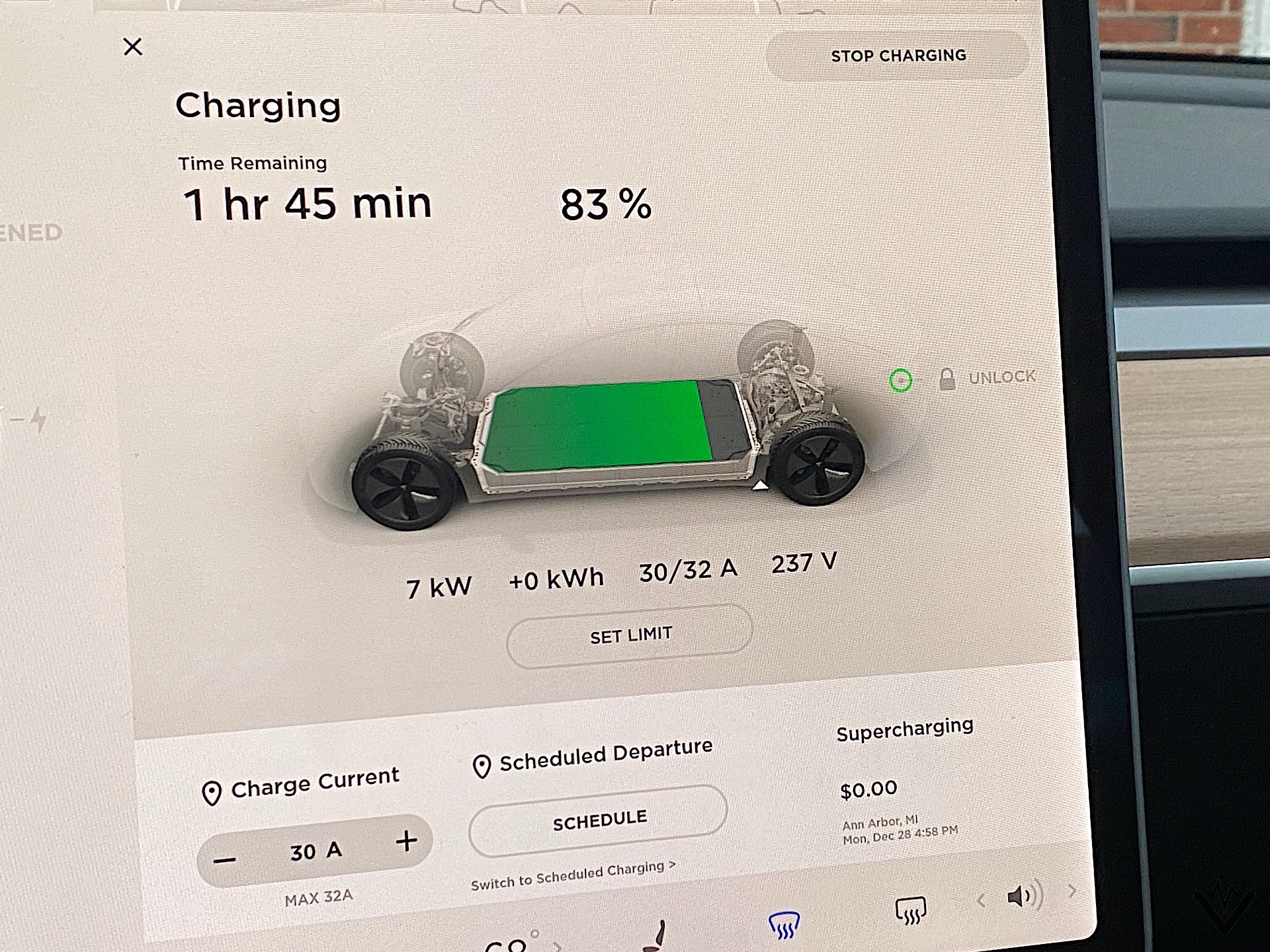
The adapter itself was pulsing away, meaning that it was charging.
A quick glance at the Tesla’s onboard computer and it indicated that we were charging at approximately 7 kW.
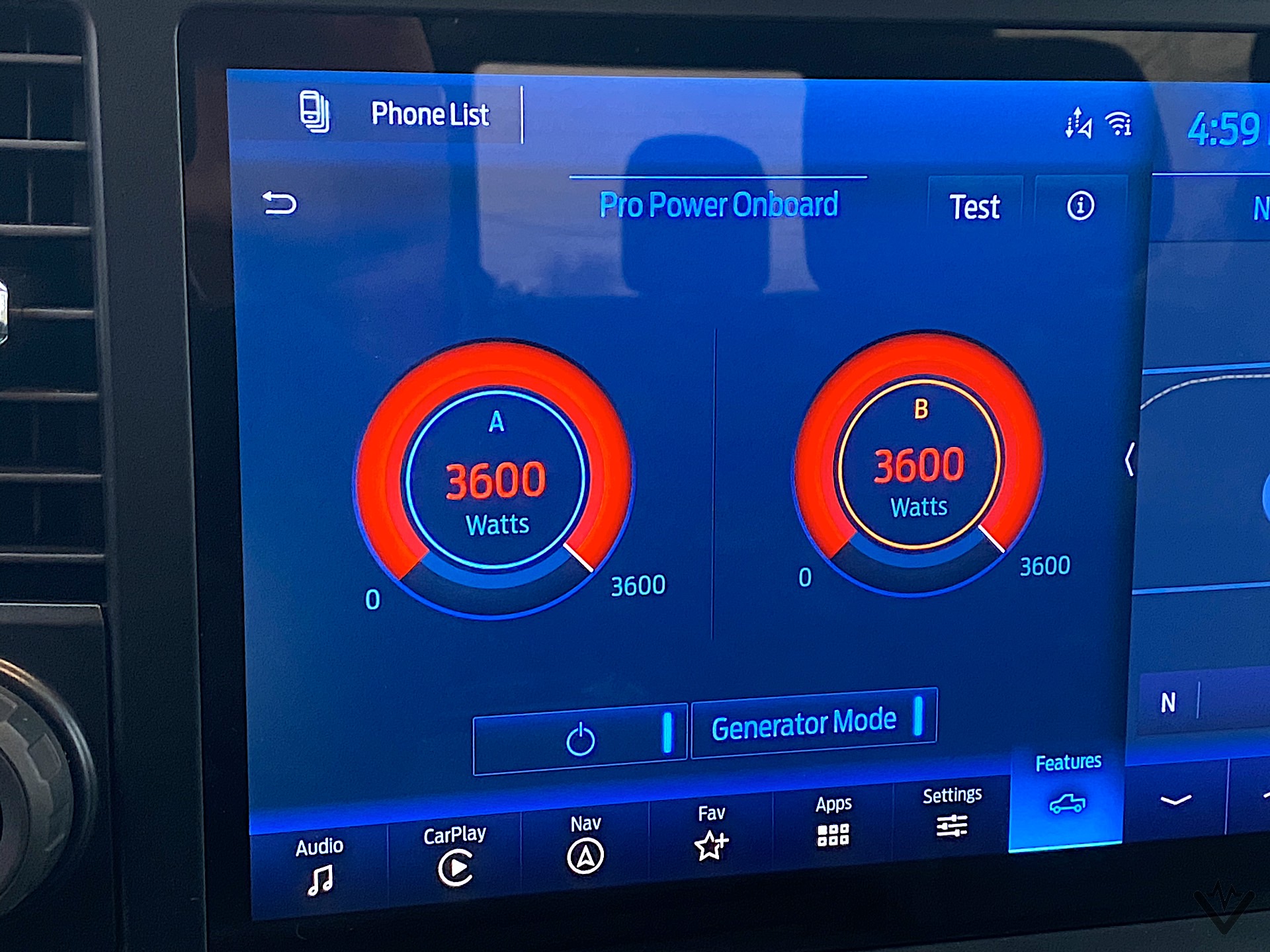
We checked the Pro Power Onboard indicator in the F-150 and both gauges were pegged. But, they weren’t over the limit.
We set and let the truck charge the car for nearly 20 minutes and it set there, maxing the generator while charging the car.
Conclusions
Yes, you can change your Tesla with the Pro Power Onboard generator in the 2021 Ford F-150 PowerBoost. If you opt for the 7.2 kW generator, you can nearly maximum charge a Tesla Model 3 or Model Y Standard Range (the longer ranges can go up to 48 amps). That’s really darn impressive.
Presumably, you can do this with other EVs as long as you had the right adapters and connections. Since we only have the F-150 for a week, we might not be able to try it with a different EV.
What’s impressive about the generator is, since it’s hooked up to the truck, it doesn’t need to run loud to work. Emissions are controlled by the emissions systems on the truck, and there’s even a quiet mode if you’re using it at a campsite and aren’t drawing peak power.
There are a lot of uses for the onboard generator that don’t involve charging a car, but you can bet money if we were in the business of needing to charge stranded EVs, we’d have one in our fleet.
It’s more compact than a portable generator. It’s quieter than most generators. It’s also not that much more expensive to spec it over the price of the truck.
Pretty cool.
Recent updates
Updated (12:39 pm EST, 12/21/2022): Added our video feature charging the Tesla with the F-150 Powerboost.
